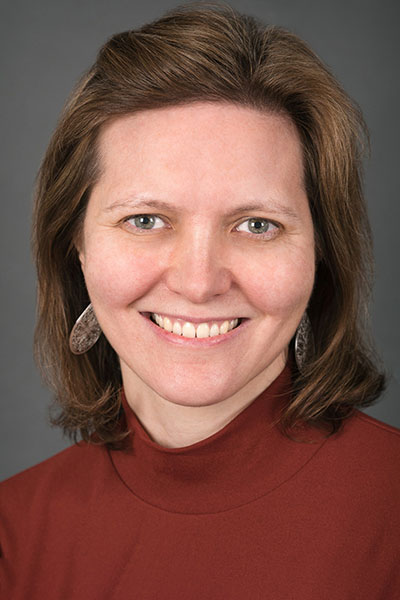
Most pediatric pulmonologists must be prepared in the treatment of both common breathing disorders as well as rare pulmonary conditions.
During a panel discussion Sunday, October 16, at CHEST 2022, Overview of Management of Advanced Lung Diseases in Children, experts presented four detailed cases of pediatric patients with advanced lung diseases. For each case, presenters offered tips on how to establish a diagnosis, recognize co-morbid conditions, and incorporate a multidisciplinary team in patient care.
Alicia Casey, MD, co-director of the interstitial lung disease program at Boston Children’s Hospital, opened the session with a case description of a 2-year-old male patient with tachypnea and chronic increased work of breathing.
Reviewing the case
The patient had previously been hospitalized for pneumonia, hypoxemia, and occasional fevers; had been receiving supplemental oxygen intermittently; and had been Coombs positive since 17 months. On referral, the patient had failure to thrive, a history of low muscle tone, and speech delay.

Nidhy P. Varghese, MD, FAAP, associate professor of pediatrics at Baylor College of Medicine, discussed the patient’s first and second chest CT scans, which showed quite a bit of consolidation, air trapping in the lower lobes, and ground glass abnormalities in the upper lobes.

Caroline Okorie, MD, MPH, clinical associate professor of pediatrics and pulmonary medicine at Stanford Medicine, walked attendees through appropriate next steps for this patient, which could include genetic testing, pulmonary function testing (PFT), bronchoscopy and bronchoalveolar lavage, aerodigestive evaluation, cardiac/pulmonary hypertension evaluation, or lung biopsy.
Exploring biopsy
Stephen E. Kirkby, MD, medical director of the lung and heart-lung transplant programs at Nationwide Children’s Hospital, Columbus, OH, discussed biopsy options for the patient.
“In pediatrics most of the time, we have to do surgical biopsies to get a big enough sample of tissue to do all the studies we need,” Dr. Kirkby said. “Occasionally we can do transbronchial biopsy with smaller pieces of tissue.”
Results of the lung biopsy were reviewed by a multidisciplinary team, which Dr. Casey emphasized is an essential component.
“Right away we could see that there were too many blue cells for this patient,” Dr. Casey said. “[The biopsy] also shows alveoli are filled with macrophages, and there were even some giant cells that had formed. The interstitial space and airways had lymphoid hyperplasia and interstitial lymphoid infiltrates.”
The team was concerned about the patient’s immune system and discussed that right away. Dr. Casey said the patient was eventually diagnosed with common variable immunodeficiency (CVID).
Looking ahead to future management
Dr. Casey also discussed what would have been needed in the setting of further evaluation for childhood interstitial lung disease (chILD). The working definition of chILD requires three of the following four criteria in the absence of another etiology: respiratory signs, respiratory symptoms, hypoxemia, and diffuse abnormalities on imaging.
She discussed the management and supportive care necessary for the care of chILD, including correcting gas exchange abnormalities, optimizing nutrition, diagnosing and treating co-morbid conditions, preventing further lung insult, and consideration of medication therapy.

“Patients often need oxygen or invasive support and sometimes tracheostomy and ventilators,” Dr. Casey said.
Dr. Kirkby discussed whether the case patient would be a candidate for a lung transplant.
“The best outcome would be for the patient to not need a lung transplant,” Dr. Kirkby said. “However, I would encourage every parent of a child with severe chILD know where the closest pediatric lung transplant center is. There are only about 8 to 10 in the United States who transplant truly young kids, less than age 5. The only wrong time to consider transplant is when it’s too late.”
He said that given some of the encouraging progress on the patient’s second CT scan, he imagined that with time and growth, transplant would not be needed.
Dr. Casey confirmed that was the outcome for this patient. The patient started airway clearance therapy and responded to steroids. He then developed hemolytic anemia and was started on a regimen of rituximab, which led to a dramatic improvement in lung disease. The patient was weaned off BIPAP, oxygen, and azithromycin. He has been receiving regular IV immunoglobulin and has had normal PFT and sleep study results.
According to Dr. Casey, the patient “now plays hockey and his CT [scan] is much improved.”
Learn more about CHEST’s efforts to improve the time to diagnosis for ILDs, including chILD, and improve outcomes for patients with the Bridging SpecialtiesTM initiative.
Join us at CHEST 2025
Save the date for the next Annual Meeting, October 19 to 22, 2025, in Chicago. CHEST 2025 will explore the latest advancements in pulmonary, critical care, and sleep medicine, with a focus on innovation and the future, just as the city itself embodies progress and reinvention.





